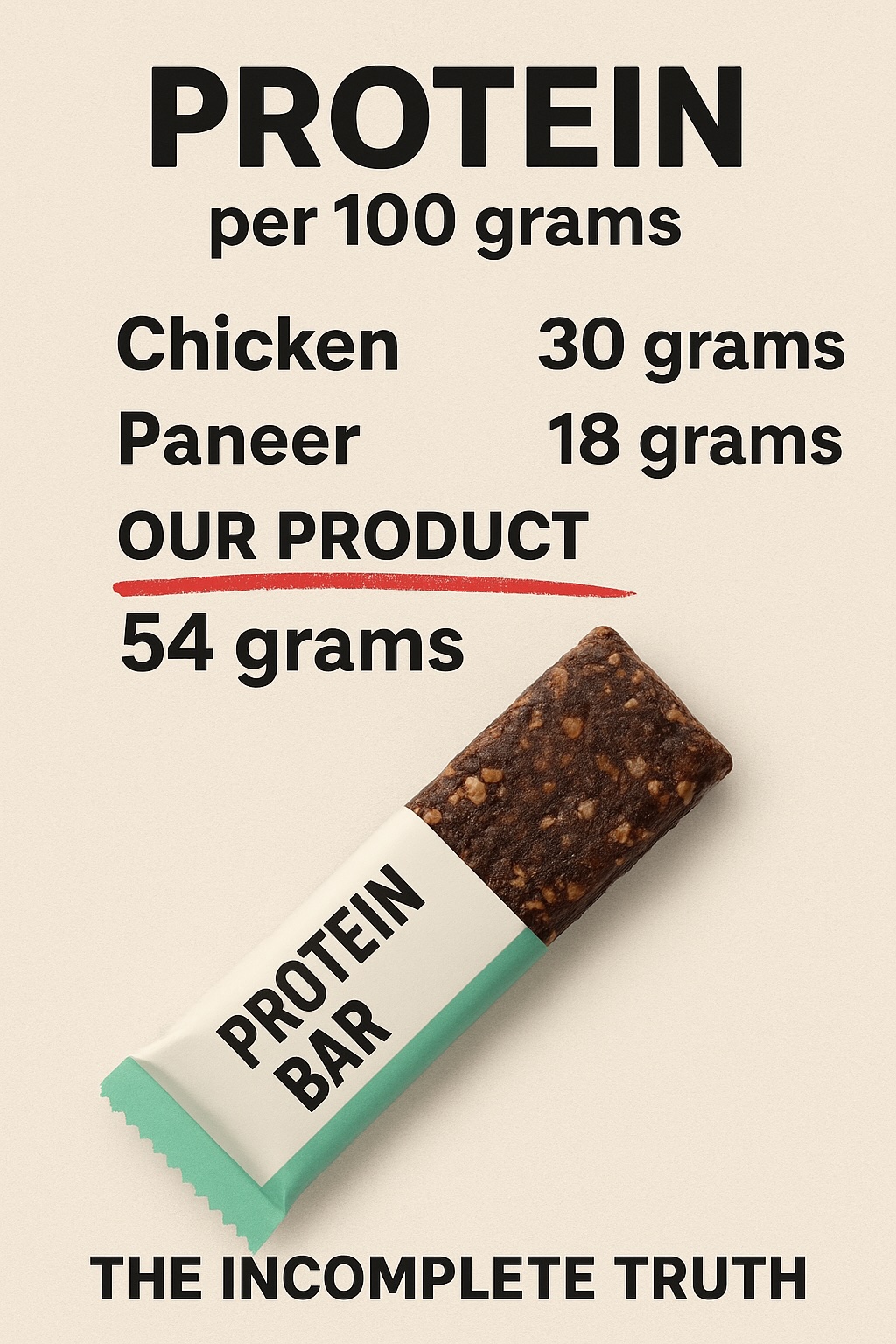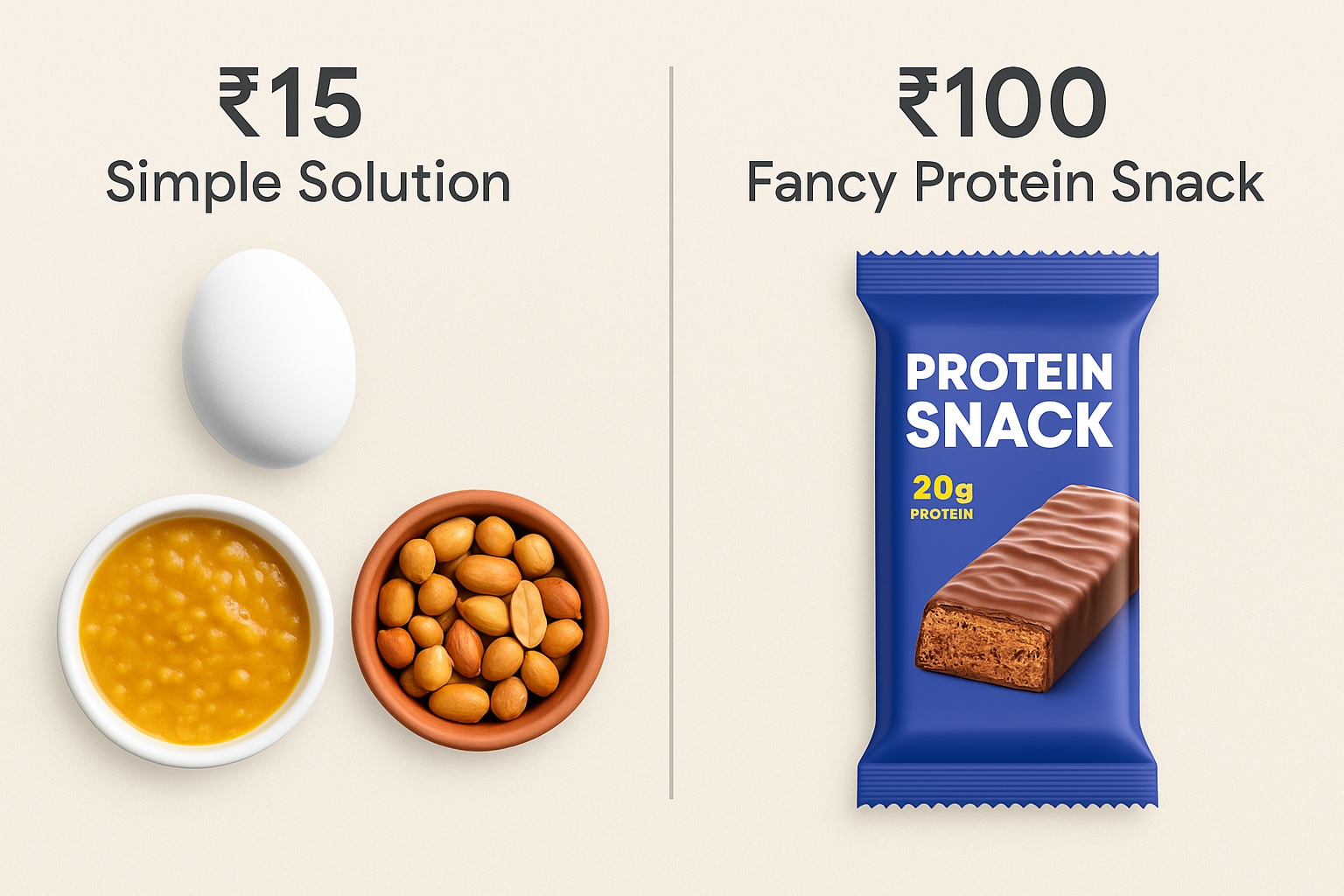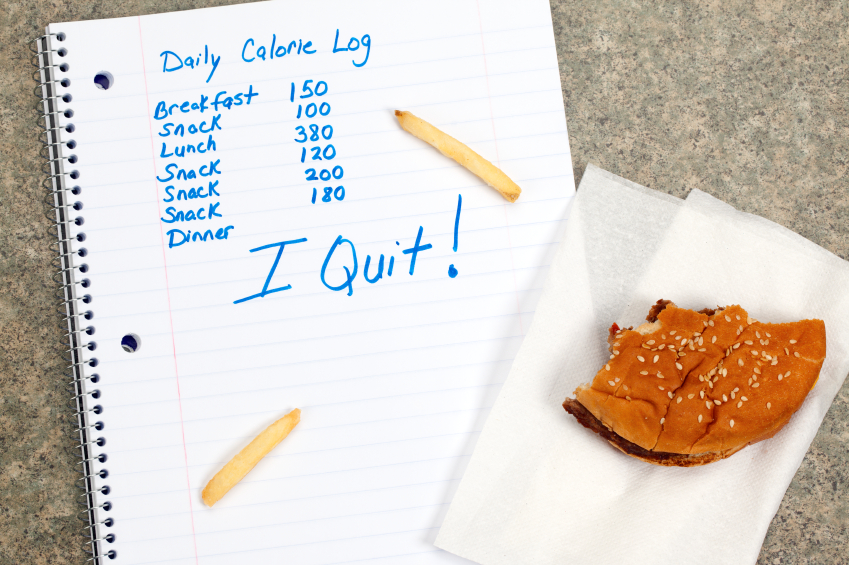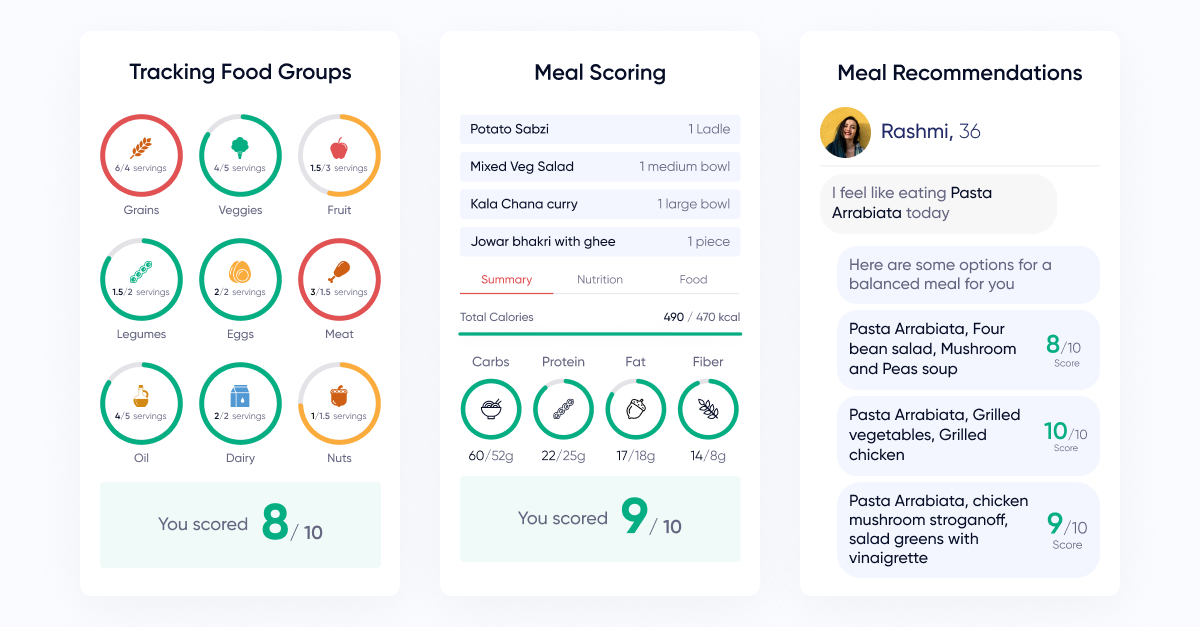
Protein is the new buzzword. From protein bars to protein chips, every packaged food brand is rushing to market itself as the ultimate health food. And how do they do it? By comparing themselves with your everyday staples like chicken or paneer.
A classic example goes like this:
Protein per 100 grams

Sounds impressive, right? Twice the protein of chicken!
But what about the missing truth?
Cost per 100 grams
Calories per 100 grams
Suddenly, that “high protein miracle” doesn’t look so magical.
This is the fine line between truth and honesty. Truth in marketing often comes with selective data. Yes, the numbers on protein are technically correct. But without context—on price, calories, satiety, and actual nutrition—the truth is incomplete. And an incomplete truth is nothing less than a lie in disguise.
What’s even more ironic? The humble ₹10 cashew biscuit is grilled for not containing “enough cashews,” while a ₹350 protein bar gets away with disguising itself as health food.
The double standards in nutrition marketing are glaring. Until regulations (ASCI, FSSAI) and consumer awareness catch up, the influencer-driven food narrative will keep celebrating half-truths packaged as health.
Because in 2025, marketing > nutrition.
#fmcg #truth #protein #marketing #calories #fooddata #nutrition #asci #fssai #foodpharmer #hypocrisy





